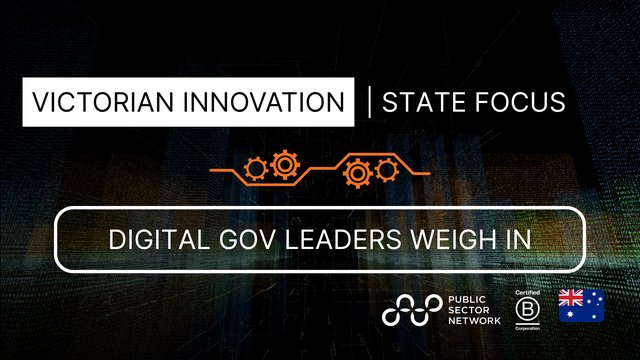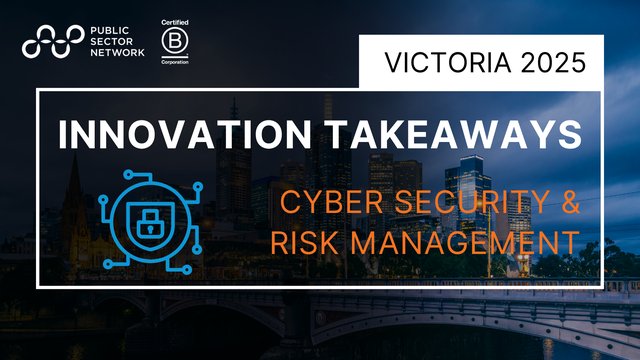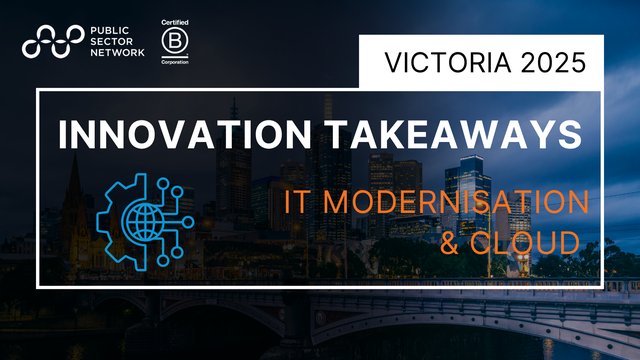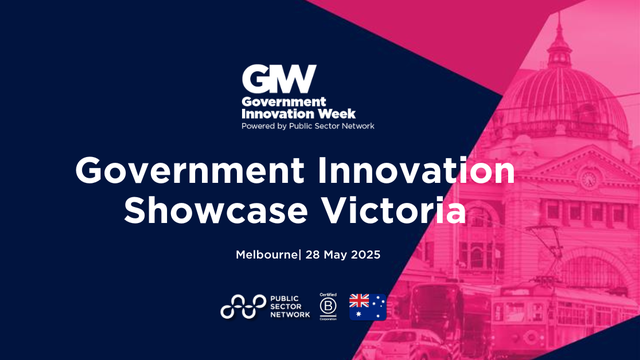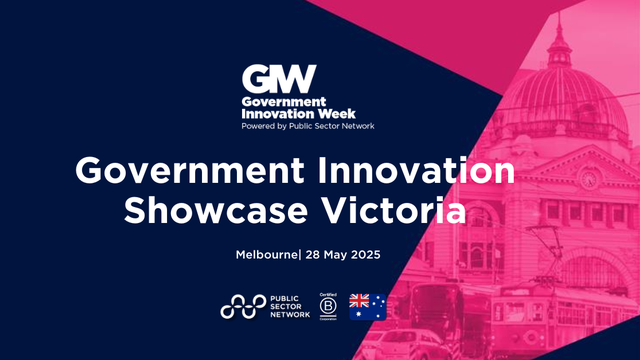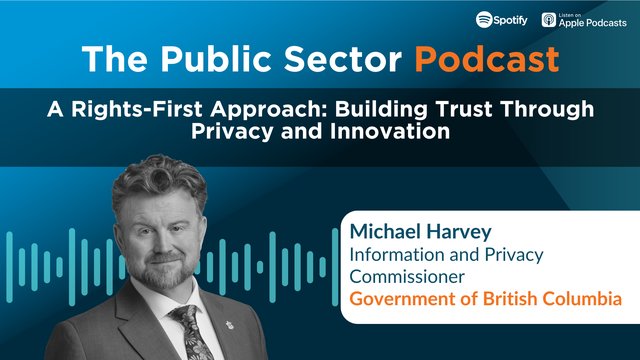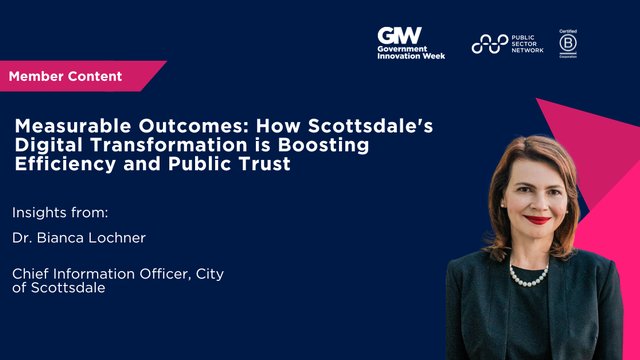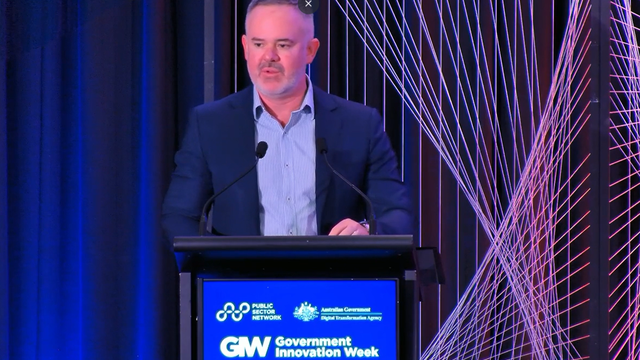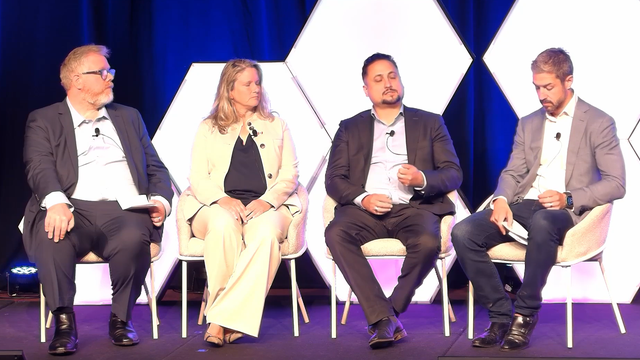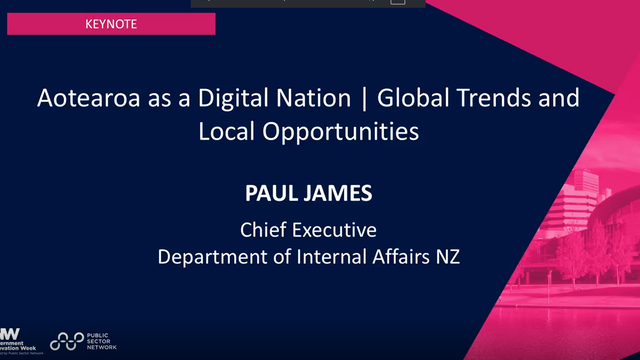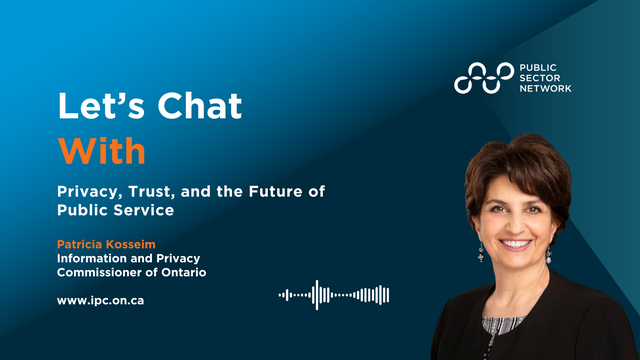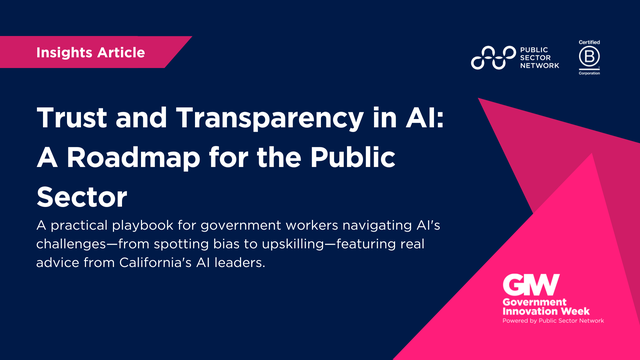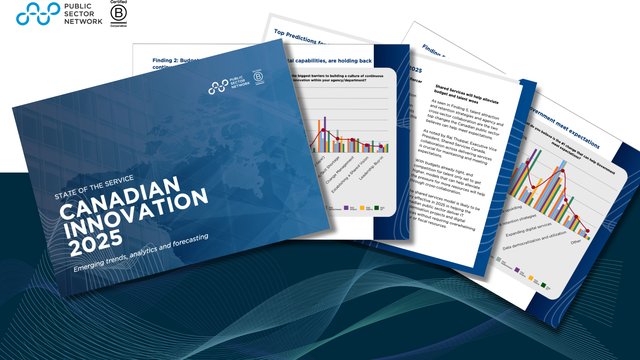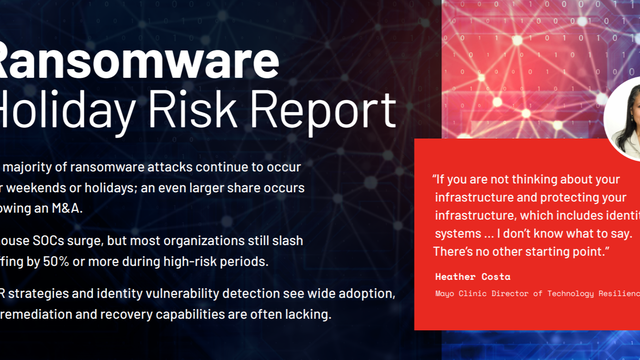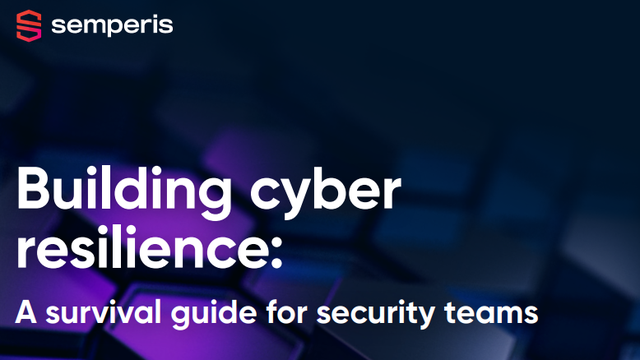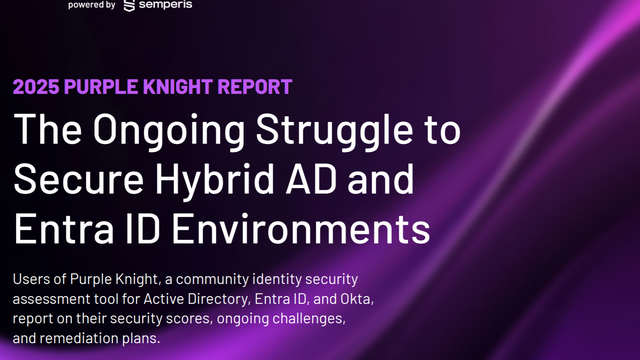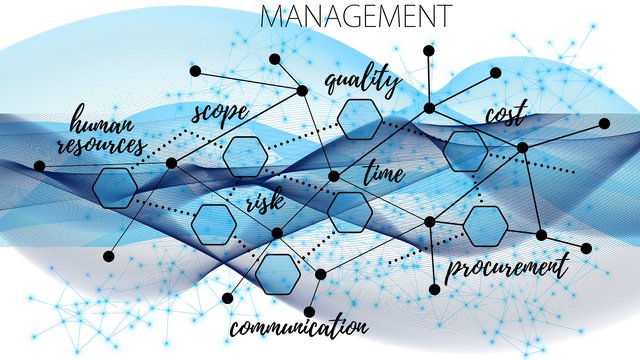
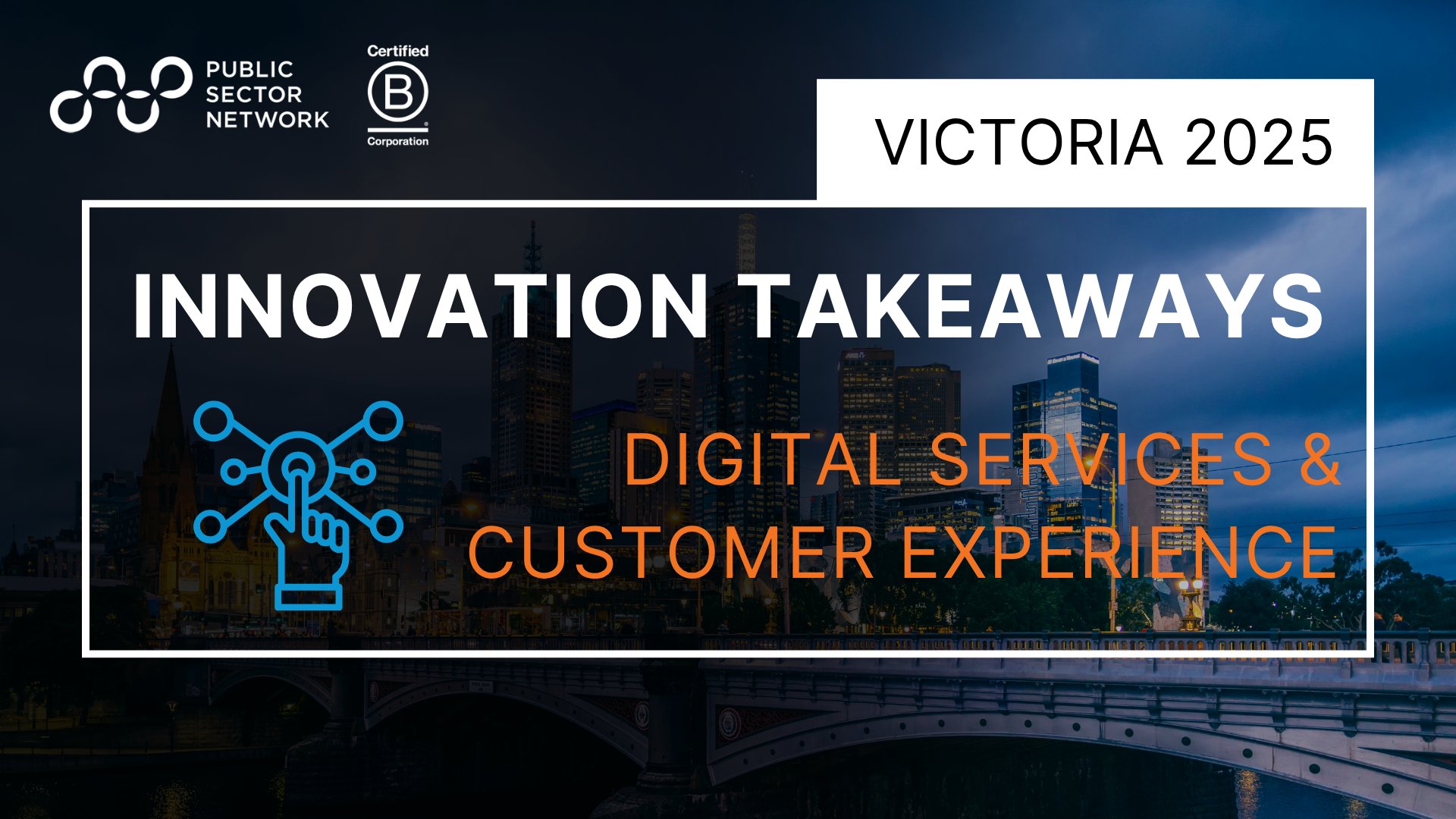
Visionary Leaders’ Panel: Future-Proofing Public Services | Digital Priorities and the Road to 2030
Paul Broderick, Commissioner, State Revenue Office of Victoria
Sven Bluemmel, Victorian Electoral Commissioner, Victorian Electoral Commission
Emily Mailes, Chief eHealth Strategy Officer, Victorian Department of Health
Stephen King, Commissioner, Productivity Commission
Sean Morrison, Information Commissioner, Office of the Victorian Information Commissioner
Public service transformation must prioritise trust, inclusion, and long-term structural reform.
Whether it's electoral integrity, data privacy, or health system design, the panel consistently emphasised that digital reform must be underpinned by public trust. That means transparent data governance, privacy-by-design, and responsible AI use—not just technical compliance. For leaders, trust must be treated as a core outcome, not a byproduct.Quick wins are necessary—but not at the cost of sustainability or systemic coherence.
The discussion reinforced that quick wins can build momentum, demonstrate value, and secure stakeholder buy-in. But panellists warned against sacrificing long-term resilience. Particularly in domains like elections and health, there’s a need for meticulous planning, rigorous stability, and enduring architecture that withstands political and technological shifts.Policy, funding, and incentives—not technology—are often the real blockers to transformation.
As Emily Mailes highlighted, many public sector systems don’t just need digitisation—they need full reimagining. But legacy incentives and siloed funding models (e.g. federal-state healthcare) stifle innovation. For your organisation, this means digital strategy must be tightly coupled with policy reform and procurement redesign to unlock scalable, system-wide improvements.
International Keynote: Designing a Digital Technology Roadmap | A Perspective from Stats NZ
Emma Jones, Deputy Government Statistician and Deputy Chief Executive for Technology Operations, Commercial & Collections, Stats NZ
Forget “transformation”—modernisation is about fixing what matters, not chasing hype.
Emma’s frank rejection of buzzword-heavy transformation programs underscores the value of pragmatic, iterative action. Stats NZ’s focus is not radical reinvention but repairing critical systems, addressing legacy risk, and improving service performance—especially where front-line staff and citizens are directly impacted. This approach builds credibility by delivering small, visible wins that rebuild trust in delivery.Technical debt is not just a tech issue—it’s a business risk.
Stats NZ mapped its sprawling, brittle system landscape and found 44 critical “red” systems with no replacement plans. By establishing a structured remediation program (including a “triage” stream for near-term fixes), they moved from reactive firefighting to strategic investment. For agencies, this highlights the need to quantify and communicate technical debt as a business liability, not just an IT concern.Execution matters more than vision—structure your teams, projects, and incentives accordingly.
Success came from aligning digital and business accountability, embedding BA and change expertise early, resisting over-customisation, and focusing on platforms (e.g. Salesforce) to prevent future legacy. For public leaders, this session was a reminder that digital delivery isn’t just about buying the right tech—it’s about governance, culture, and sustained focus on what actually works.
Improving Customer and Employee Experience in Government
Corrie Thomas, Executive Director, Customer Services and Business Revenue, State Revenue Office Victoria
Lucas Ferrier, Senior Manager, Technology Engagement and Planning, WorkSafe Victoria
Facilitator: Sian Jenkins, Marketing Director, APAC, Genesys
Better customer experience starts with better employee experience.
Both agencies emphasised that frontline staff engagement, well-being, and enablement are foundational to delivering effective citizen services. Whether through real-time call support, AI-generated notes (like Copilot), or resilience training (as at SRO), investment in staff tools and culture is critical. For your organisation, this means prioritising tools that reduce friction and elevate agent empathy in high-pressure environments.Digital service channels need to be integrated, intelligent, and inclusive.
With omnichannel strategies underway—email, SMS, chatbot, IVR redesign—both SRO and WorkSafe are focusing on directing the right enquiries to the right people quickly. Smart IVRs, sentiment analysis, and use of AI assistants are improving efficiency and customer satisfaction. For digital leaders, this highlights the need to design journeys that are seamless across channels, responsive to user behaviour, and continuously optimised.Don’t just digitise—understand and eliminate unnecessary contact.
Both panellists are actively seeking to reduce low-value or avoidable contacts (e.g. lost white cards, generic enquiries) by identifying call drivers, improving self-service, and using AI to triage or pre-empt issues. This points to a broader insight: digital transformation is not just about faster resolution, but fewer resolutions—preventing the need for contact in the first place.
Putting the Focus on Digital Equity, Inclusion and Accessibility for Victoria
Rebecca Van Wollingen, Executive Director Operations, Safer Care Victoria
Nikhil Patinge, Director – WoVG Digital Integration Services | Technology & Digital Platforms, Department of Government Services
Matthew Dummett, Director, Telecommunications and Transformation Policy, Department of Government Services
Digital inclusion goes beyond access—it must encompass affordability, ability, and embedded design.
Victoria leads the nation in digital inclusion, but regional, disabled, and low-income groups remain highly excluded. Inclusion must be systemically designed into digital infrastructure—from multilingual APIs to low-bandwidth optimisation—ensuring no user is left behind.Co-design must start with the people most affected—not be added after the fact.
Inclusive services begin with direct engagement, not second-hand assumptions. Safer Care Victoria embeds consumers in every project and uses live feedback loops. Inclusion fails when it’s bolted on as a checklist item rather than built into discovery and delivery.AI can bridge the digital divide—but only with trusted data and responsible implementation.
Government services are becoming “AI-ready” by improving backend data quality and infrastructure. While front-end deployment remains cautious, AI holds promise—especially for enabling multimodal access for digitally illiterate users, provided accuracy and ethical safeguards are prioritised.
Interstate Case Study: Driving Citizen-Centric Outcomes Through Digital Transformation | amica | Legal Services Commission of South Australia
David Mazzone, Chief Operating Officer, Legal Services Commission of South Australia
Designing legal services around real human needs delivers better outcomes, not just better tech.
Amica, a government-developed online dispute resolution (ODR) platform, was built by flipping the script—centering users over lawyers in the design process. Instead of assuming what people should need, the team asked when and how people wanted to engage, discovering that after-hours, mobile-first support and on-demand legal empowerment tools best suited users experiencing separation or trauma.AI, when ethically bounded and human-validated, can resolve complex disputes and expand access to justice.
Despite initial resistance from legal professionals, Amica uses AI to suggest equitable property splits and generate court-ready documents—backed by extensive legal training data and lawyer oversight. Guardrails (e.g., sentiment analysis, coercion detection, DV-safe pathways) ensure trust, accuracy, and safety, proving that responsible AI can coexist with high-stakes legal processes.Client-centricity isn't a buzzword—it's a governance strategy with social and economic impact.
By embracing human-centred design and challenging assumptions, Amica saved users millions in legal costs and freed public legal aid resources. It highlights a replicable model: start small, co-design with affected communities, validate with professionals, and scale services that empower citizens. The lesson: government is uniquely positioned to deliver trusted, equitable digital services—if it listens first.
Pushing the Vision of Digitally Connected Services for Citizens Forward
Jonas Petersen, Chief Digital Officer, Department of the Premier and Cabinet, WA
Katherine McDermott, Founder, See Me Please
Arpan Bansal, Global Head, Government Centre Of Excellence, Newgen Software
Facilitator: Jennifer Arnold, Head of Advisory, Public Sector Network
Connected services require structural, not just technical, reform—and start with whole-of-government commitment.
True citizen-centricity means breaking down silos, standardising systems like digital identity, and implementing solutions at scale. Panellists stressed the need for enforced onboarding and cross-agency interoperability, moving beyond informal collaboration to committed, staged rollouts that reach critical mass. Without strategic cohesion, even strong front-end experiences remain fragmented.Inclusion must be embedded from the outset—not layered on after service design.
Katie McDermott emphasised that digital equity demands testing with, and designing for, users traditionally considered edge cases: people with disabilities, older adults, and non-English speakers. These groups’ insights reveal systemic blind spots—particularly in digital identity systems that, by default, exclude people without driver’s licences or passports. The message: if you don’t test with them, you won’t reach them.Low-code platforms and AI offer real promise—but only when matched with trust, interoperability and data readiness.
Arpan Bansal illustrated how combining generative AI and low-code tools can accelerate back-office efficiency, automate records management, and deliver intuitive, real-time citizen services. However, this transformation hinges on AI models being securely deployed in closed environments, using clean and accessible data. Public trust and system-level guardrails are non-negotiable foundations for scaling these capabilities responsibly.

